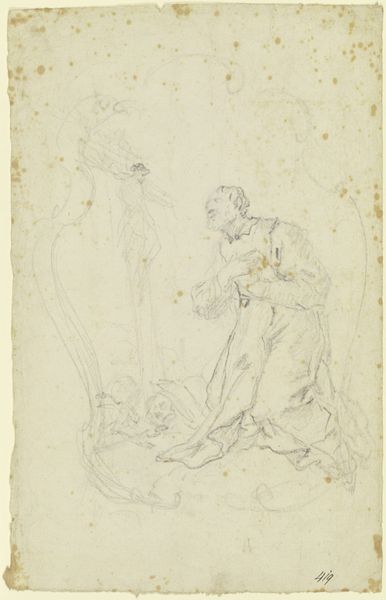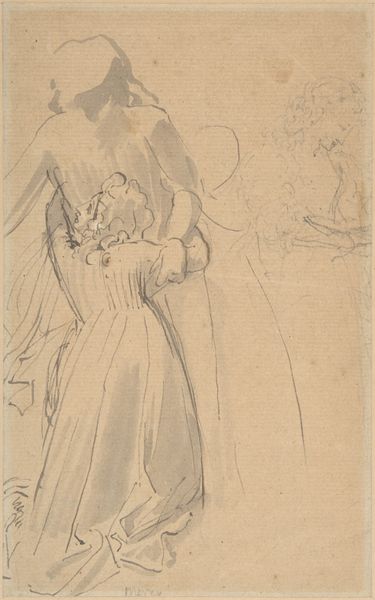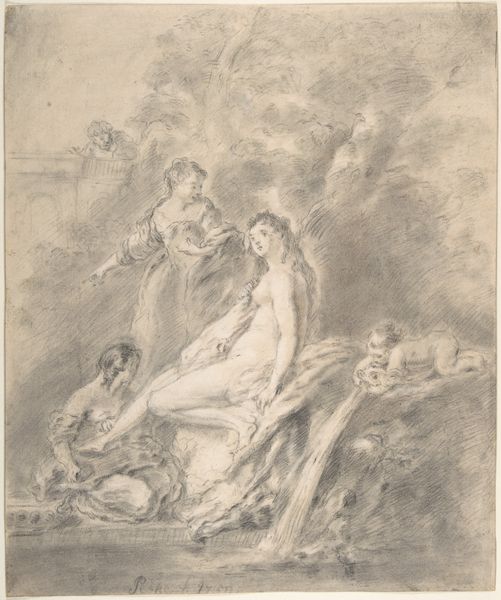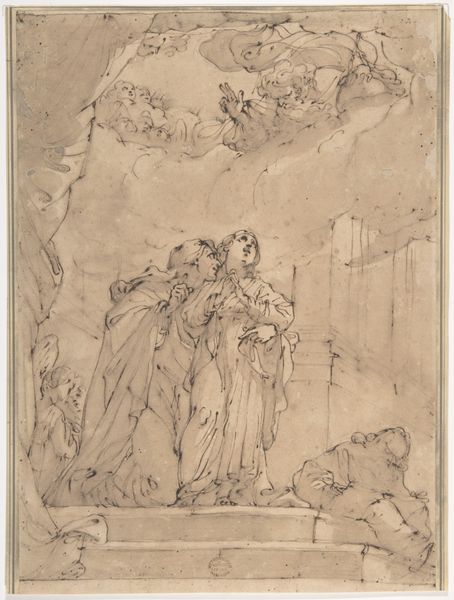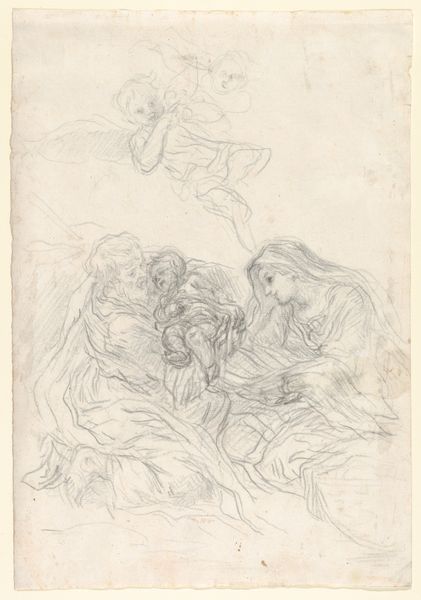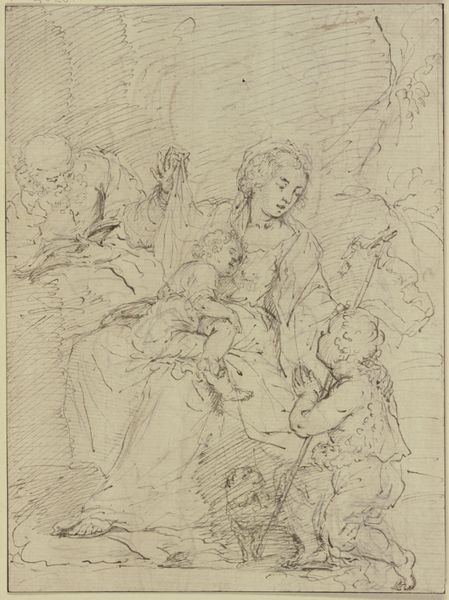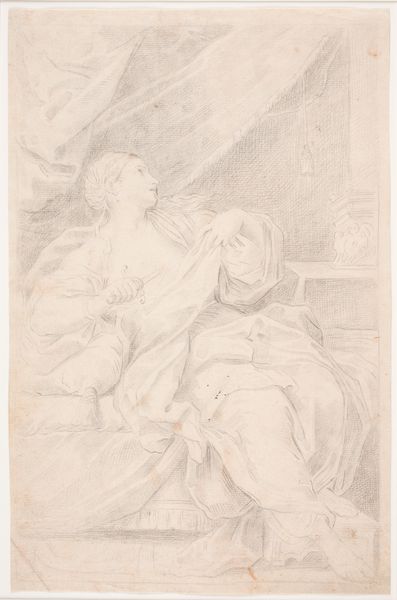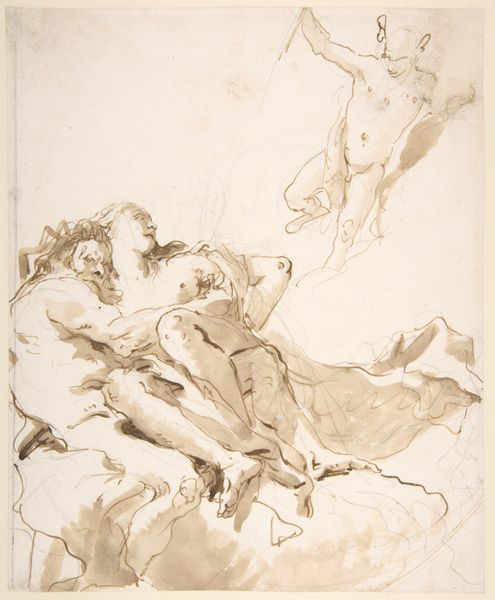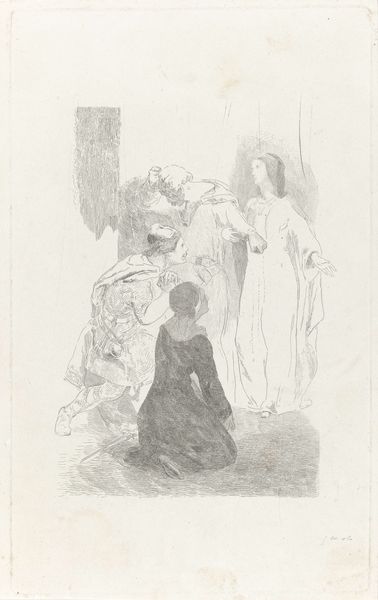
drawing, print, pencil
#
drawing
#
neoclacissism
#
allegory
# print
#
landscape
#
classical-realism
#
figuration
#
pencil drawing
#
pencil
#
history-painting
#
academic-art
Dimensions: sheet: 14 5/8 x 12 in. (37.1 x 30.5 cm)
Copyright: Public Domain
Curator: This pencil drawing, titled "Scene with Classical Figures," is attributed to William Pitts and was likely created sometime between 1805 and 1840. You can find it here at the Metropolitan Museum of Art. Editor: Well, immediately I'm struck by its ethereal quality. The light is diffused, and the figures seem to emerge from, or perhaps recede into, a cloudy background. There's an interesting ambiguity to the depth of field. Curator: Absolutely. Note the artist’s strategic use of shading to create a sense of volume, particularly in the rendering of the drapery and the musculature of the figures. The composition itself adheres to neoclassical principles, emphasizing balance and symmetry despite its somewhat unfinished state. Editor: Do you think the unfinished quality of the artwork might represent an artist experimenting and reflecting socio-political turmoil of the era? Considering, in that period, revolution and societal restructuring were quite common? Curator: An intriguing point. I would consider its stylistic resemblance to academic art which valued established traditions and decorum in its figuration of form. Though, an interesting detail is the interplay between these terrestrial figures and the elevated classical ideals represented through their figures as godlike representation. Editor: Considering this historical context of such societal values, do you think it had any part in a wider visual culture where the goal of representation of morality were sought through paintings with historical narratives and allegory? I see a story unfolding from Athena, whose image evokes courage and power to other god-like figures with symbolic relevance through neoclassical form. Curator: Exactly, that could suggest allegorical interpretations around idealized moral standards! Notice how Pitts employs classical figuration as part of Neoclassicism—the crisp lines and calculated arrangements lend it that historical depth within Western European culture. Editor: Overall, Pitts seems successful with achieving such delicate and dream-like piece using only pencil and paper that provokes some deep cultural symbolism. The cultural symbolism is portrayed by its compositional arrangement alongside classical imagery and adds depth in visual representation and visual culture. Curator: It truly showcases his remarkable technical skill to blend classical elements in creating a culturally potent drawing, regardless if one engages with societal and/or visual structures to form one's opinions about Pitts. Thank you for the deep consideration!
Comments
No comments
Be the first to comment and join the conversation on the ultimate creative platform.


